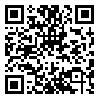BibTeX | RIS | EndNote | Medlars | ProCite | Reference Manager | RefWorks
Send citation to:
URL: http://jdisabilstud.org/article-1-2312-en.html

 , Javad Khalatbari *2
, Javad Khalatbari *2 
 , Shohre Ghorban Shiroudi2
, Shohre Ghorban Shiroudi2 
 , Anahita Khodabakhshi-Koolaee3
, Anahita Khodabakhshi-Koolaee3 

2- Faculty Member, Department of Psychology, Tonekabon Branch, Islamic Azad University
3- Psychology and Education Science Department, Humanities Faculty, Khatam University
Background & Objectives: If the marital conflict is not resolved, it will cause inefficiency and inability of the couple. Therefore, teaching how to resolve conflict is essential to building a satisfying relationship. Factors that can be effective in marital conflict are family function and distress tolerance. Considering the role of psychological factors in women with marital conflicts and the use of multiple therapies and their effectiveness, and that most studies conducted to reduce conflicts and divorce have had a similar method and form, the psychological package in this research method can be very effective due to the high homogeneity with the existing context. Everything in this package has arisen from the basics of research related to the field and seeks to combine different methods to reduce marital conflict. The effectiveness of a treatment package based on transdiagnostic therapies of the McMaster model focused on compassion and mindfulness are examined in the family function and distress tolerance of women with marital conflict.
Methods: This applied research is a quasi–experimental study with a pretest–posttest design, a control group, and a 3–month follow–up. The statistical population of this study comprised all women with marital conflict who were referred to four selected counseling centers in the west of Tehran City, Iran, in the spring of 2019 who answered the Marital Conflict Questionnaire Sanai and Barati (2008). Then, 100 women who obtained the highest scores of marital conflict were chosen. Next, the Family Assessment Device (Epstein et al., 1983) and Distress Tolerance Scale (Simons & Gaher, 2005) were administered to them. Afterward, among eligible individuals, 24 women with a high score on family performance and a low score on distress tolerance volunteered and participated in the study. They were randomly divided into two groups: control and experiment. However, two people from each group dropped out, and the number of each group was reduced to 10. The inclusion criteria included having a high score on the Marital Conflict Questionnaire, being 25 to 45 years old, lacking drug addiction, having at least a diploma, not receiving psychological interventions at the study time, and having passed at least one year since their marriage. The exclusion criteria were an absence of more than two sessions from the therapy package. The experimental group underwent 12 therapy sessions designed based on McMaster transdiagnostic therapies, focused on compassion and mindfulness. The control group did not undergo any intervention. Both groups were followed up three months after the intervention. To analyze the data, in the descriptive statistics section, the central and dispersion indices, including the mean and standard deviation, were used. In the inferential statistics section, the repeated measures analysis of variance and the Bonferroni post hoc test were used. Also, to compare two groups in terms of demographic variables (duration of marriage, age, education), the Chi–square test was used. The aforementioned statistical analyzes were performed in SPSS version 24. The significance level of the tests was considered 0.05.
Results: The analysis of variance of family performance was significant for intragroup (time) (p<0.001) and intergroup (p=0.042) factors. Also, the analysis of the variance of distress tolerance variable for intragroup (time) (p<0.001) and intergroup (p<0.001) factors were significant. Thus, for both variables of family function and distress tolerance, there was a significant difference between the experimental and control groups during the research stages, indicating the effect of the intervention. The mean score of family function in the experimental group in the posttest was lower than that in the pretest (p<0.001). Also, family function in the follow–up stage was significantly different from the pretest (p=0.004). There was no significant difference between the posttest and follow–up (p=0.975). The results showed that the distress tolerance scores in the experimental group in the posttest were higher than those in the pretest (p<0.001). In the follow–up stage, there was a significant difference from the pretest (p<0.001). No significant difference was observed between the posttest and follow–up (p=0.981).
Conclusion: Based on the study findings, the designed transdiagnostic package effectively improved family function and distress tolerance of women with marital conflict, and this package can be used to reduce marital conflicts.
| Rights and permissions | |
 |
This work is licensed under a Creative Commons Attribution-NonCommercial 4.0 International License. |

